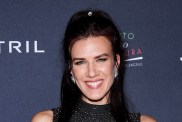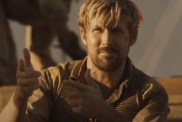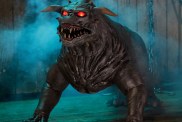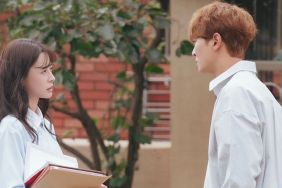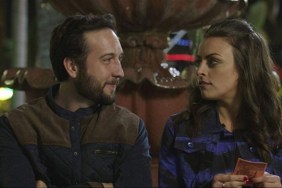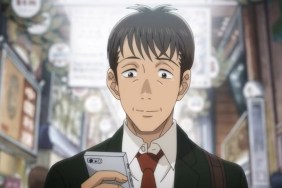
Set in the post-Katrina New Orleans, it’s setting itself up to be an epic full of wonder, thrills, and monsters that we’ve never seen before in comics.
Like the other Vertigo titles, it was one of my favorite single issue comics of March. I reached out to the writer Selwyn Seyfu Hinds and he graciously accepted to do an interview with us.
Shock Till You Drop: Give us a little bit about your background and how that lead to the comic book.
Selwyn Hinds: Sure, well I guess it’s a two part background you know. The background as a comics fan reader, and then as a writer. As a writer, I’ve been writing professionally since I got out of college, so thats a while now. Since the mid-’90s. I started out as a journalist in the print field, the first place I worked was the Village Voice in New York. I wrote about the arts and culture and stuff like that there. So I had a tenured career as a print journalist at the Voice, as editor of The Source magazine in the late-’90s. I did some stuff about internet. I wrote two non-fiction books about music, the first was a memoir called Gunshots in My Cook-up and the second one was about jazz that I wrote with Wynton Marsalis. That was actually cool because Wynton as you know is from New Orleans and I think even back then I was really getting fascinated with the city and stories about the city. It’s such a unique place in the American culture. After that I moved into TV space, in the mid-2000s, as a producer for the last half of that decade at VH1, MTV. Still story telling, but just story telling in a different medium. And probably the most opportune thing that happened then, in terms of what I’m doing now, my last gig at BET was where I met Reggie Hudlin, who was running programming at the time, and Denys Cowan. All three of us were at BET from 2005- 2008, and that was a time where I was making a transition form narrative non-fiction and journalism writing to screenwriting, TV writing. And it hadn’t occurred to me then, which is funny in retrospect, that I could also write comics. As many cons as Id been to, I’d always been kind of shy about approaching people. I’d never really met anybody who had written a comic book until I met Reggie. He was kind of like, Oh my god you’re such a fan. You’ve been reading books since you were like six or seven years old. If you’re writing for TV there’s no reason why you shouldnt think about this as well.
So myself, Reggie, and Denys began working on a side project, and through a bunch of different ways that project got in front of Karen Berger at Vertigo. I was at Comic-Con, I guess it was in 2009 or 2010, where Karen and I met. She was like Oh my god I saw that thing that you wrote and I love it so much. We should really sit down and try to figure out some stuff that you can do with Vertigo. And that was the beginning of both my Vertigo relationship and I guess my published history as a comic writer. The first thing I wrote for them was a short story called Case 21 in Strange Adventures. That was my first published piece.
As a reader I grew up in the Caribbean, in a country called Guyana. I’ve been reading comics for as long as I’ve been reading, period. Growing up there was a really cool place to read comics and read period. This is like in the ’70s in a country like Guyana you didn’t have television. So most of the stuff that you had to read was all based on your imagination and narratives that you’ve read. Back then I was reading a lot of the Claremont X-Men stuff to Archie and Jughead. There’s a big Indian population in Guyana so theres this really great line of comics called the ACK comics and they were all about like the myths of the Hindu gods. I got into this sort of pantheon based god mythology thing pretty early. So Ive been a reader since then.
There’s been a couple of periods where I slowed down or stopped collecting or stopped reading. After the big boom in the 90s I probably stopped a little around then but I’ve been a pretty consistent fan for almost my whole life. Both comics an sci-fi and the more imaginative kind of writing, just general. Long answer to your short question.
Shock: Going back to what you said about your story, did you have to shop around the idea before it got to Vertigo or did it just kind of happen?
Hinds: It just kind of happened. What Karen and I were both committed on was the idea of finding something to work on together. I didnt have the idea for Voodoo Child to kind of go shopping it around. I had something, I wish I could tell you what exactly it is, It’s really cool. It’s actually going to be announced soon, so I can’t actually say what it is yet. But Karen saw the treatment for this graphic novel project that Denys and I are doing a couple of years. She really liked it and was just kind of like We’ve got to find something that we can work on together. So, we probably went through, I guess over the course of six months, maybe two or three other ideas. I’d go away for a while, think for a bit, write a one page thing and say How about this?. We probably did that two or three times before we settled in on Voodoo Child. That was really cool how that happened so it just came up in a conversation. She had just been to New Orleans and thought, Wow this is such a unique, interesting city that has such a rich base of mythology and supernatural stuff. How come Vertigo hasn’t done anything here? I was talking to her about my love for the city, starting back with that book I did with Marsalis and also at the time when I was at BET doing journalism stuff, I was in charge of the network’s coverage of Katrina. I have a real visceral sense of the city. And she said Why don’t we think abut something based in New Orleans? I came back there about two weeks later with the initial pitch for Voodoo Child and it’s been smooth sailing from then on.

Hinds: Yeah, he was the only person that we both thought about. I guess on board from the start in that sense, not really from the pitch and conceptualization stage. Once I had worked through Here’s an interesting pitch for Vertigo to look at internally. Then the conversation turned to well who on the art side should we use to bring this rich thing alive? And the first person out of our mouths was Denys. Denys and I already had a friendship and a working relationship. Karen really wanted to do something with him, and we both thought his particular style would be great for the book. We also thought it would be a great partnership for me, because while my favorite things as a writer are these crazy, speculative, wild trippy stuff. Denys comes out with The Question stuff, not your Vertigo type of material. What he does helps discipline what I write. It’s a really cool meeting of perspectives.
Shock: That goes into my next question. How has his art changed in any way, your direction of the series, or the way you write it or your vision of the series as a whole?
Hinds: It’s really interesting, I’ve heard a lot of writers talk about how they collaborate with different artists. I guess people collaborate with different people differently. So, there’s a lot of caveats to it. I think it was something Azzarello said when he was talking about 100 Bullets and I think he made a comment about his collaborator not just being his hand. That really has come true with me for this project, Denys is really truly my collaborator in every way. I write pretty exhaustively and I guess you’ll see when the trades come out, I guess because of my TV background I tend to direct every single beat, every single shot. I’m not a sparse writer in that sense, but the great thing about Denys is hes still able to take all that and sometimes he’ll do exactly what I say, sometimes he’ll change it. But almost inevitably whatever he does adds a dimension to the narrative the way I imagined it that you just simply couldnt make up on your own as a writer. So, what he’s down is really add the third even the fourth dimension to these characters and story lines. It’s one thing to carry it around in your head or even have it on paper, but once you see them as this practically breathing embodiments of your imagination it opens you up creatively. It was one thing to write Dominique in words, but once I saw the character I was like Oh, this character looks like she might say this, or do this, or move this way, or think that way. I think its because we’re visual creatures so we can’t help but being affected that way. Going back to what you said earlier, it sounds like the way the pitch worked for Voodoo Child – it was kind of a fluid effort between you and Karen.
Shock: What was the original pitch like and how different is the end result now from what you had originally conceived?

Shock: What’s been the most challenging thing about writing the series?
Hinds: Getting your arms around your own ambition. I’m kind of of the school that’s Go big or go home. I don’t really believe in doing anything by halves, or you know if you’re going to make a mark you’ve got to pour everything on the fire. The challenging thing about that is its possible to edge over the line a bit too much, so the whole thing is this negotiation of Where is the line? Where do you pull back? Where can I push forward?. So, managing that idea, that’s the most challenging thing in a macro sense. Vertigo surrounded me with, I feel like the kid that just got drafted to the showtime Lakers from the ’80s. It’s so sick it doesn’t make any sense. Rafeal Grampa is doing the cover, Dave Stewart’s coloring the covers, these are guys I worshiped as a fan and that’s the kind of trippy part. I’m only two years removed form being a really happy lover of comics at Comic-Con. Every issue I say this mantra to myself where I can’t let this team down, I can’t let Karen Berger down, I can’t let Denys Cowan down. Everyone does their own stuff, but it all starts with the DNA of what I bring. I think that internal pressure of to maintain and keep a certain standard issue to issue is probably the biggest challenge.
